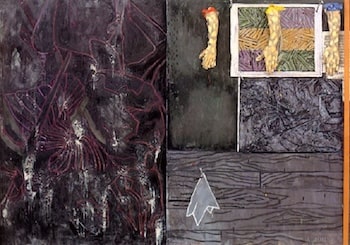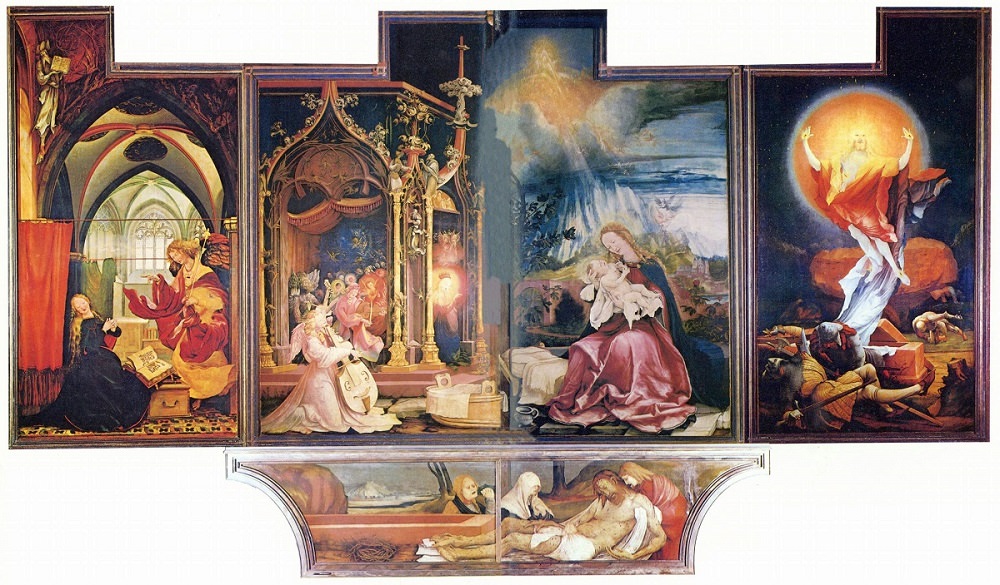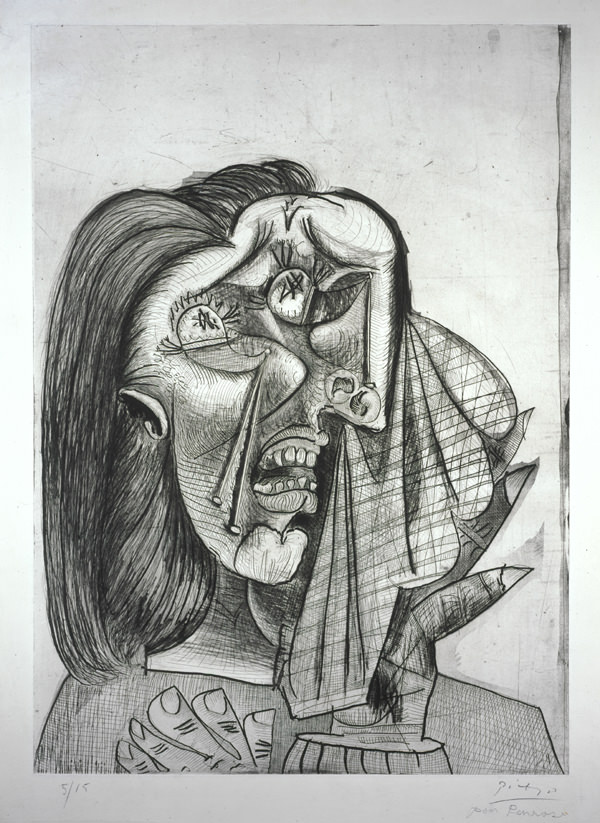Perilous Night, 1982 by Jasper Johns

Perilous Night is dark and dense. Obscure images, mysteriously juxtaposed, act almost as an armor, preventing the viewer from penetrating the painting's meaning.
The painting's structure, however, is clear. It is a diptych, made up of two halves. On the left is a single dark image. On the right are a number of disjointed but clearly defined images and
objects. What do they signify and what is the relationship between the two sides?
Almost all of Johns' images incorporate art history, art-making, found images, and references to his earlier works and experiences. Scholars have probed these sources, speculating on their many
possible meanings.
Fortunately, Johns revealed the source for this half of Perilous Night because even the most astute art historian would have been hard-pressed to discover it.
The image is derived from Matthias Grunewald's Isenheim Altarpiece, a powerful, expressive painting depicting scenes from the lives of Christ and Saint Anthony. Johns became engrossed with a detail
from the painting, the figure of a soldier whose body twists dramatically after being struck down by the brilliant light emanating from the resurrected Christ.

|
Johns wondered if the figure was expressive in its very structure, beyond its role in the altarpiece. To explore this possibility, he traced it from a reproduction, turned it ninety degrees, reversed
it, and painted his own version in shadowed tones with purple outlines. Its abstract presentation adds a perceptually unsettling quality to the image.
A handkerchief is "pinned" to the wall with a trompe l'oeil nail. What does it suggest? Johns adapted this motif from a Picasso etching of a weeping woman - an image of protest against the Spanish Civil War and its death toll. Without knowing its source, the handkerchief might appear neutral or even cartoonish. But in context, it suggests sadness and grief.
Plaster casts of three dismembered arms hang from hooks against the surface of the painting. The spots on the arms might allude to illness and death: they recall Grunewald's manner of depicting Christ's wounds in the Isenheim Altarpiece. Some critics have interpreted the spots as sores produced by AIDS. Johns said he found this connection logical, though it was not intentional.

|
